The life sciences are on the cusp of a leap forward in our understanding of life on this planet, as well as the ways that human activity is altering Earth’s systems and cycles. Thanks to recent advances in research tools and techniques, we are now capable of linking genomic information not just to the synthesis of molecules that comprise our physiological functions—knowledge Carnegie scientists were crucial to elucidating over the last half-century—but also extending these investigations to the community interactions that shape both human health and ecosystem resilience.
By applying cutting-edge molecular biology techniques to pressing environmental problems, Carnegie scientists are revealing the genes and processes that underpin ecologically important traits. This knowledge can be used to guide conservation efforts, improve agricultural sustainability, mitigate climate change, and solve longstanding health mysteries.
Learn about five ways Carnegie researchers are deploying a genomes-to-ecosystems approach to driving scientific discovery and enhancing our understanding of the interconnected nature of life on Earth.
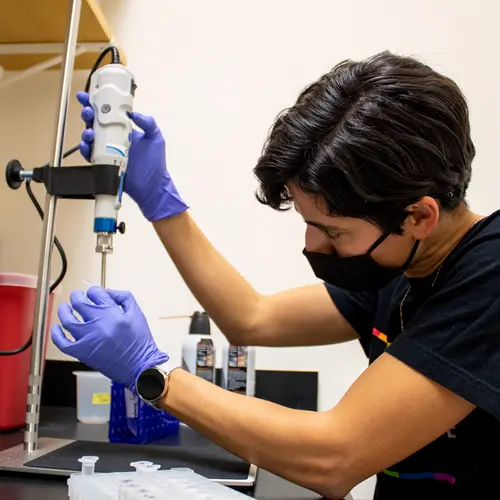
1. Coral Conservation
Coral reefs are biodiversity hotspots with tremendous value for many coastal communities. Despite this, they are in decline due to human activity. Carbon pollution that we spew into the air is both warming oceans—causing fatal bleaching events—and altering seawater chemistry—resulting in ocean acidification that impedes reef growth. Phillip Cleves’ lab was the first to use the Nobel Prize-winning CRISPR/Cas9 genome editing technology in coral. His team previously revealed a gene that is critical to how a soft coral species responds to heat stress—information that may help predict how corals will handle future bleaching events. And earlier this year, Cleves lab graduate student Amanda Tinoco revealed a gene that’s critical to stony corals’ ability to build their reef architectures. The lab is continuing to use CRISPR/Cas9 to gain genetic information that could inform efforts to build coral resilience and rehabilitation in the face of destructive ocean acidification.
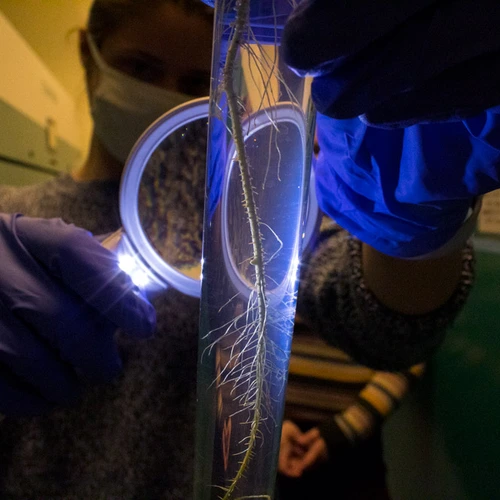
2. Sustainable Agriculture
Brittany Belin’s lab uses cell biology tools, including advanced microscopy and biochemical approaches, to study the biology of rhizobia, soil bacteria that can convert atmospheric nitrogen gas into plant-fertilizing ammonia. Rhizobia form intimate symbioses with edible legumes like soybeans and peas, serving as a sustainable alternative to synthetic fertilizers—which are made using energy-intensive, greenhouse gas-emitting processes and can contribute to dangerous water quality impairments such as harmful algal blooms. Harnessing the capabilities of these bacteria could help to naturally and sustainably feed the world’s rapidly growing population.
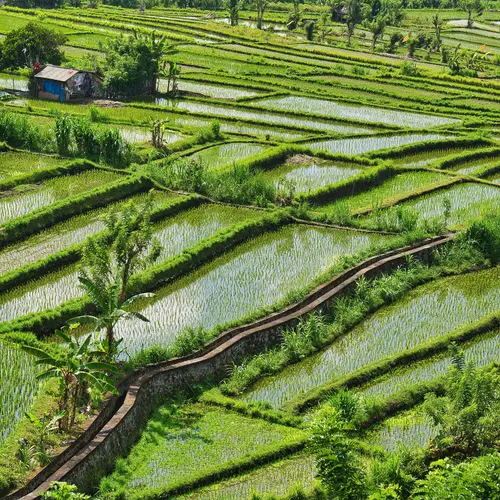
3. Feeding the World
Anyone familiar with pool maintenance knows how quickly algae can grow. This is due to algae’s ability to biochemically boost photosynthesis—the cellular process plants, algae, and certain bacteria have to convert the Sun’s energy into food. One of its crucial steps involves pulling carbon dioxide out of the air and then using it to construct carbon-based sugars inside a cellular factory. But despite photosynthesis being vital to plants’ ability to survive and thrive, they aren’t actually very efficient at grabbing and fixing carbon in this way. Algae, however, have mechanisms for concentrating carbon dioxide in the cell, speeding up their production of glucose, sucrose, and other nutrients. Adrien Burlacot's lab is working on elucidating these capabilities in detail by developing new approaches that can unravel the set of bio-energetic mechanisms involved in efficient carbon dioxide capture. Doing so could enable scientists to harness algae’s special powers and use them to increase agricultural productivity, fight global hunger, and remove more carbon pollution from the atmosphere—contributing to climate change mitigation.
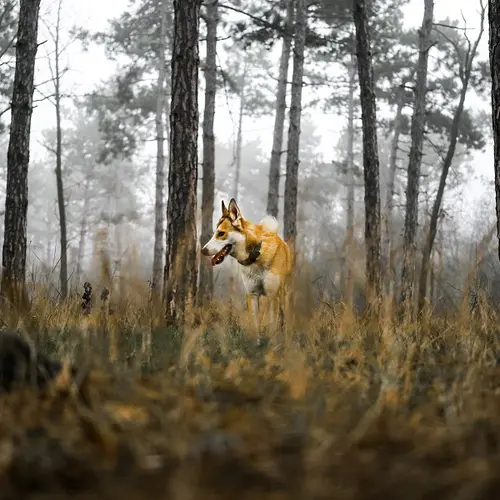
4. Canine Health
The gut microbiome is an ecosystem of hundreds to thousands of microbial species living within an animal’s body. Its composition is shaped by a variety of factors, including diet, health, lifestyle, and exposure to different bacterial species during development. For the past five years, Will Ludington’s lab has advanced microbiome research using genetic, physiological, and computational approaches. Although much of his laboratory work involves using fruit flies as a model organism to better understand the human microbiome, he recently collaborated on a project probing the genetic basis of an autoimmune gut disorder that is found in an extremely rare dog breed, the Norwegian lundehund. This breed is susceptible to an imbalance in gut microbiota called dysbiosis; in humans, inflammatory bowel disease, Crohn’s disease, and ulcerative colitis would also fall into this category. In a set of papers, the researchers showed that there are genetic factors controlling the microbiome composition of these dogs, and that introducing genetic diversity by interbreeding them with similar breeds can eliminate the disorder.
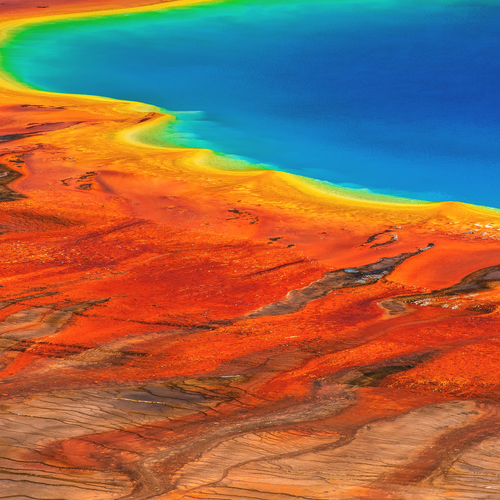
5. Microbial Communities
Biology has been revolutionized by the knowledge that microbial activity and interactions underpin nearly every aspect of our health and the functioning of the world’s diverse ecosystems. From extremophiles living in deep sea vents to the beneficial bacteria living in the human gut or in association with plant roots, bacterial communities are crucial to understanding the world and our existence in it. Devaki Bhaya’s lab specializes in studying cyanobacteria—microbes that are capable of photosynthesis. One area of particular interest for her group is naturally occurring bacterial populations living in the hot springs of Yellowstone National Park. Probing their genetic diversity, community interactions, adaptation to environmental stressors and evolutionary dynamics might help inform efforts to engineer resilience in the face of climate change.
